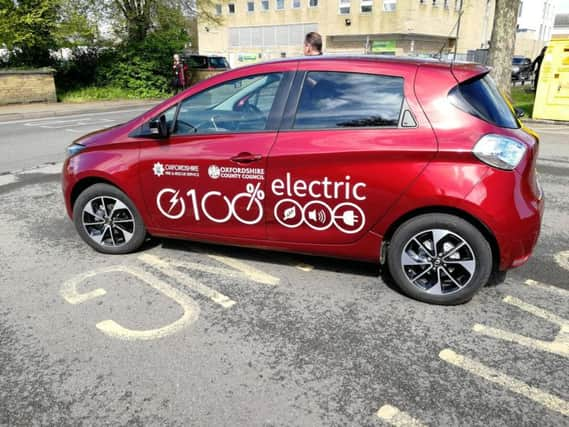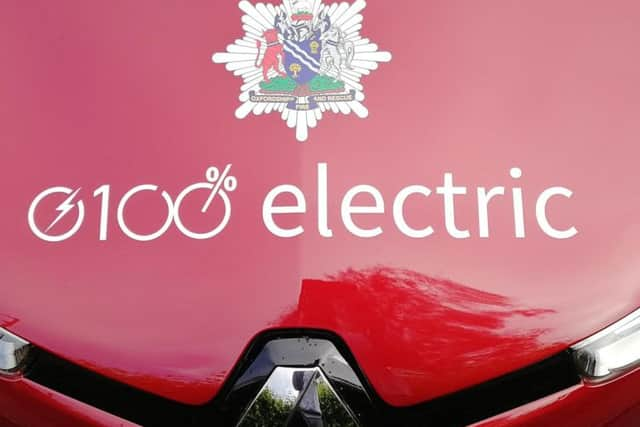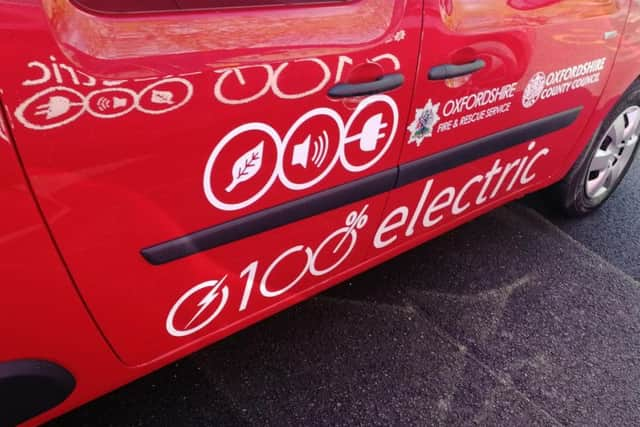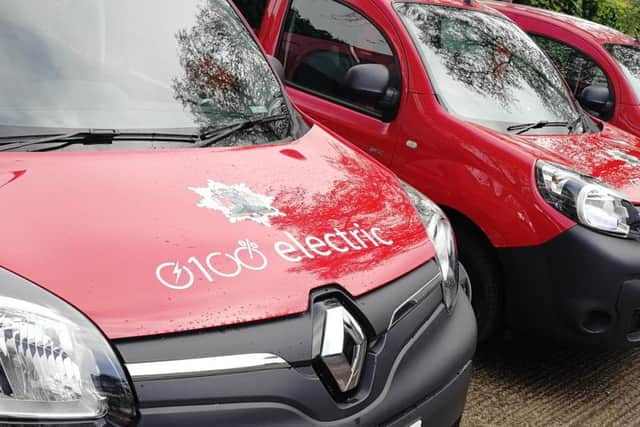Oxfordshire’s Fire and Rescue Service goes green


The council has already committed to being carbon neutral by 2030 and has also signalled its dedication to carbon neutrality via sustainable energy projects like Local Energy Oxfordshire, the V2GO charging initiative as well as seeking to reduce the number of miles its staff travel for by encouraging flexible working and greater use of virtual meeting technology.
Moving to an electric-powered fleet of vehicles is seen as a key step and the Fire and Rescue Service is positively charged about its new Renault Zoe and Kangoo vans – all of which produce absolutely no exhaust emissions and are cheaper to run.
Advertisement
Hide AdAdvertisement
Hide AdBecause of this the new fleet, which is the first part of a strategy that will see the council replacing as much of its vehicles fleet with zero exhaust emission alternatives as possible, is already starting to make a contribution to improving air quality.


The vehicles can travel up to 160 miles on a single charge and will be used by Fire Safety Officers, as pool cars and as fire station vans and can be charged at any of the fire stations.
The county council is in the process of replacing its general pool cars with rechargeable models, with three already in use.
Grahame Mitchell, assistant chief fire officer, said: “Transport can make a major contribution to air quality and the environment. Making positive changes like switching to electric vehicles is just one way in which key pollutants can be banished from our roads and communities.
Advertisement
Hide AdAdvertisement
Hide Ad“The performance of electric vehicles has come on immensely in recent years and the ones that we have chosen meet our needs very well. They will be put through their paces by our staff and their experiences will help us when we replace more of our fleet.


“Although the initial costs of electric vehicles are higher than conventional vehicles the much lower servicing and running costs soon re-coupe this difference and providing the council with both a clean and cost effective transport.”
While the initial upfront purchase price of an electric or plug-in hybrid vehicle can be higher, this is offset by lower running costs over the lifetime of the vehicle. Plug-in cars offer a number of potential savings compared to conventional vehicles including:
A full charge in a pure electric vehicle will give a typical range of 100 miles and will cost £2 to £4. Driving 100 miles in a petrol or diesel car will cost around £13 to £16 in fuel, around four times the cost of the electric car.
Advertisement
Hide AdAdvertisement
Hide AdThere are greater savings to be had if owners can access off-peak overnight electricity tariffs.


There are fewer mechanical components in an electric vehicle when compared with conventional vehicles, which often results in lower servicing and maintenance costs.
Oxfordshire County Council is also leading the way to a new smart, local, sustainable energy system as part of the Local Energy Oxfordshire (LEO) consortium.
Project LEO, which recently kicked off following the award of more than £40m in funding - will show how an energy system of the future can support more local renewable energy generation, charging for electric cars and storage by creating the systems to balance supply and demand in Oxfordshire.
Advertisement
Hide AdAdvertisement
Hide AdThe project will demonstrate the potential for individuals and communities to become active participants in the energy systems of the future.
It will enable the buying and selling of energy between local communities, businesses and residents. Over 90 local energy projects – many owned and invested in by communities in Oxfordshire – will be integrated into the LEO systems